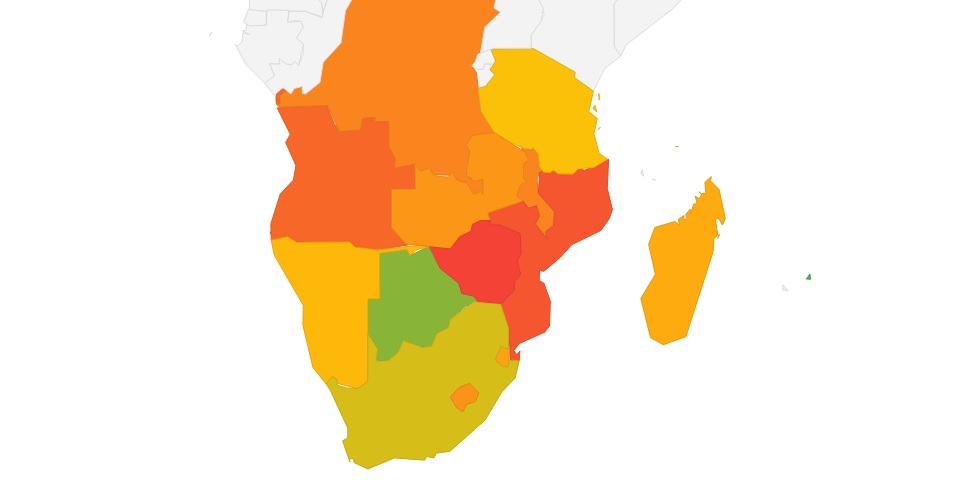
SADC Member States speak with a common voice on continental and global issues

Southern African Development Community (SADC) Member States have continued to speak with a common voice on regional, continental and global issues, and have stood together in addressing challenges facing individual Member States, according to the recently released publication, 40 Years of SADC: Enhancing Regional Cooperation and Integration.
The publication brings to light the history of SADC and key achievements that the Region has made since 1980. It was launched in Maputo, Mozambique, on 23rd June 2021 during the Extraordinary SADC Summit of Heads of State and Government.
40 Years of SADC: Enhancing Regional Cooperation and Integration highlights the major milestones and achievements as well as the challenges encountered by the regional bloc over the past 40 years.
The publication states that evidence of SADC Member States speaking with a common voice on regional, continental and global issues is seen in the regional interventions to address the political situation in the Democratic Republic of Congo, Kingdom of Lesotho, and support for Western Sahara. SADC has handled the political and security challenges in Member States well and has been able to solve its own problems without much outside interference.
Sustained peace and security are well established as an integral component of development planning in Southern Africa, due to the understanding that economic cooperation and integration require a peaceful environment in which people, including women and youths, can grow and contribute their full potential.
As part of efforts to ensure that the SADC Region remains stable and peaceful, viable instruments were developed such as the SADC Principles and Guidelines Governing Democratic Elections in 2004 (revised in 2015).
SADC plays a pivotal role in early warning, preventive diplomacy, mediation, conflict prevention and resolution, with emphasis on preventing conflict at its early stages. A strong linkage has been created between Early Warning leading to Early Action, through the establishment of the Regional Early Warning Centre (REWC) launched in 2001 and the Conflict Prevention, Preventive Diplomacy and Mediation Structure which was operationalised in 2014. These have strengthened the Region’s capacity to anticipate, monitor, prevent and resolve conflicts.
The SADC Standby Force was launched in 2007 and became fully operational in 2017 as a multidisciplinary peacekeeping force made up of military, police and civilian components which can be deployed swiftly in response to a crisis, based on a standby arrangement. From January to June 2019, SADC fulfilled it responsibility to lead the African Standby Force (ASF), which is an important tool of the African peace and security architecture for the prevention, management and resolution of conflicts in the continent, based on standby arrangements and leadership rotation among the five sub-regions of Africa.
The SADC Standby Force operates as a tool of the SADC Organ on Politics, Defence and Security Cooperation which is operationalised by the SADC Protocol on Politics, Defence and Security signed in 2001. The protocol was ratified and entered into force on 2 March 2004, providing an institutional framework through which Member States coordinate policies and activities in this area.
The SADC Regional Peacekeeping Training Centre (RPTC) was established in 2003 to provide training for peace support missions in the Region and for joint operations with other parts of Africa. The RPTC plays a key role in the implementation of the SADC Standby Force by providing peacekeeping training for military, police and civilian components, and has participated in the preparation and running of all major peacekeeping exercises conducted in the Region. The RPTC also conducts capacity-building courses for regional and national mediation to strengthen domestic mediation capacities in SADC Member States.
The Strategic Indicative Plan for the Organ on Politics, Defence and Security Cooperation (SIPO) was developed to operationalise the Protocol, based on the objectives and common agenda of SADC. The first strategic plan, SIPO I, was signed in 2004 resulting in more concerted action within the various sectors and officials. The mutual knowledge derived from greater familiarisation with the operations of the institutions of each Member State as a result of this interaction has led to an ever-increasing relationship of trust. SIPO is now included in the regional strategic plan, the RISDP 2020-2030, as an integral part of regional planning.
A Mutual Defence Pact was signed in 2003 and entered into force on 17 August 2008. Policing the borders in the SADC Region is an important element in peace and security, in coordination with the Southern African Regional Police Chiefs Cooperation Organisation (SARPCCO), for the prevention of crimes such as vehicle theft, illegal arms, and trafficking in persons.
SADC has developed a regional framework that serves as a guide for mainstreaming gender into the regional peace and security systems and processes. The SADC Regional Strategy on Women, Peace and Security (2018-2022) aims to address challenges experienced by women and children by ensuring full participation and access to their skills in peace and security activities, programmes and projects.













































